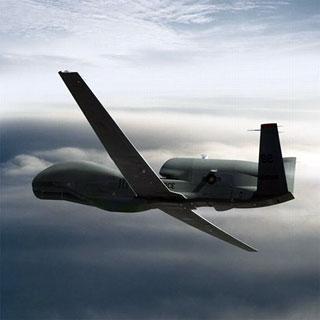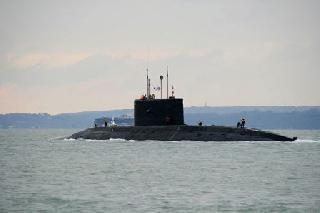
The Global Hawk drone.
WALLOPS ISLAND (AFP): A pair of converted military drones are the US space agency's newest tools for tracking hurricanes and tropical storms, with the aim of improving forecasters' ability to predict them.
Originally built for military reconnaissance missions around the world, they are the size of large commercial jets and are flown remotely from a NASA base on the Virginia coast.
The drones are capable of flying for 30 hours at an altitude of 21,000 meters, or twice the height of a passenger plane.
They can also cover large swaths of the Pacific and Atlantic Oceans in a single mission, according to Chris Naftel, head of the drone project at NASA's Dryden center in California, the secondary drone base.
The two Global Hawks began operating as NASA drones in 2012, as part of a project that will last for three years.
The drones operate in most active months -- August and September -- of the Atlantic hurricane season, which goes from June to the end of November.
"It opens a window into a storm we did not have before," said Scott Braun, a research meteorologist on the project called HS3, short for the Hurricane and Severe Storm Sentinel.
"Before we had short snap shots of individual storms at various times," he told AFP.
Until now, the old stand-bys for monitoring storms have been piloted weather planes and satellites, he said.
"By being able to view a storm continuously over a 20 hour period, you have a longer window to capture it," he added.
"This experiment will allow a better understanding of the processes that govern the intensification in the formation of storms."
Even though scientists have been able to make great leaps in projecting the paths of hurricanes in recent years, their ability to predict the power and severity of storms has improved very little.
Better forecasts would help authorities more swiftly make life and death decisions, like whether and when to evacuate people in the storm's path.
According to NASA, nearly 100 million Americans live within 80 kilometers (50 miles) of a coast and are therefore at risk of being in the path of a hurricane.
The drones have two chief scientific missions: to determine the role of thunderstorms and rain in the intensification of storms, and to study the influence of the Saharan Air Layer, in the intensity of tropical cyclones.
This very dry and dusty air mass forms over the Sahara desert and moves into the tropical Atlantic from the end of springtime until the beginning of autumn.
Scientists are divided about the air mass's impact on the intensity of tropical cyclones. Some think that the dry air could weaken a storm by blocking the upward motion of air and wind, while others suggest that the phenomenon makes storms more potent.
NASA along with the National Oceanic and Atmospheric Administration (NOAA) are partners in the 30 million dollar programme, and they hope that the information collected during three hurricane seasons in the Atlantic will provide some answers.
 Next Article
Next Article










The Indian Air Force, in its flight trials evaluation report submitted before the Defence Ministry l..
view articleAn insight into the Medium Multi-Role Combat Aircraft competition...
view articleSky enthusiasts can now spot the International Space Station (ISS) commanded by Indian-American astr..
view article